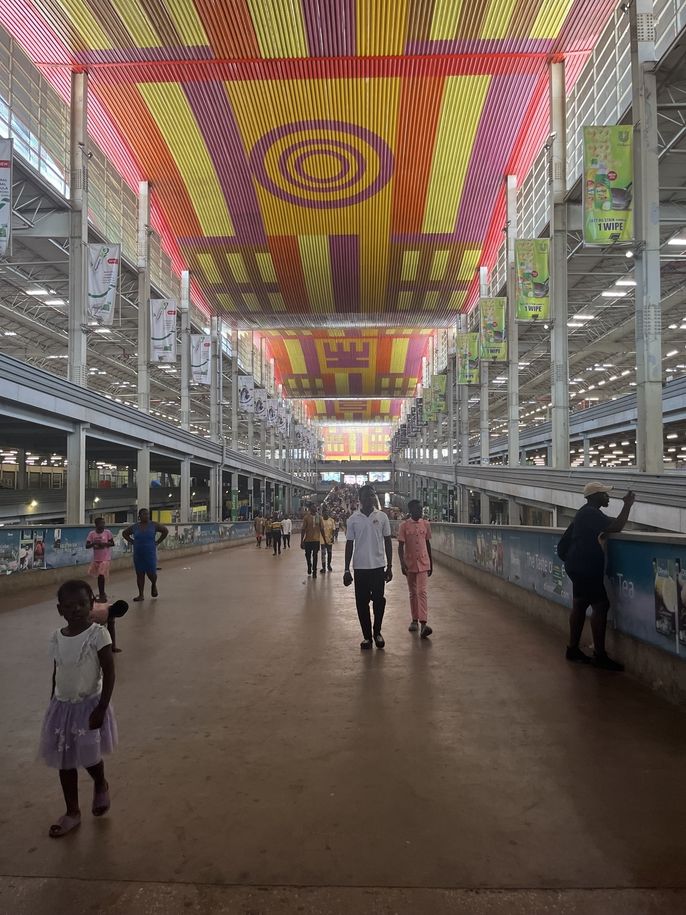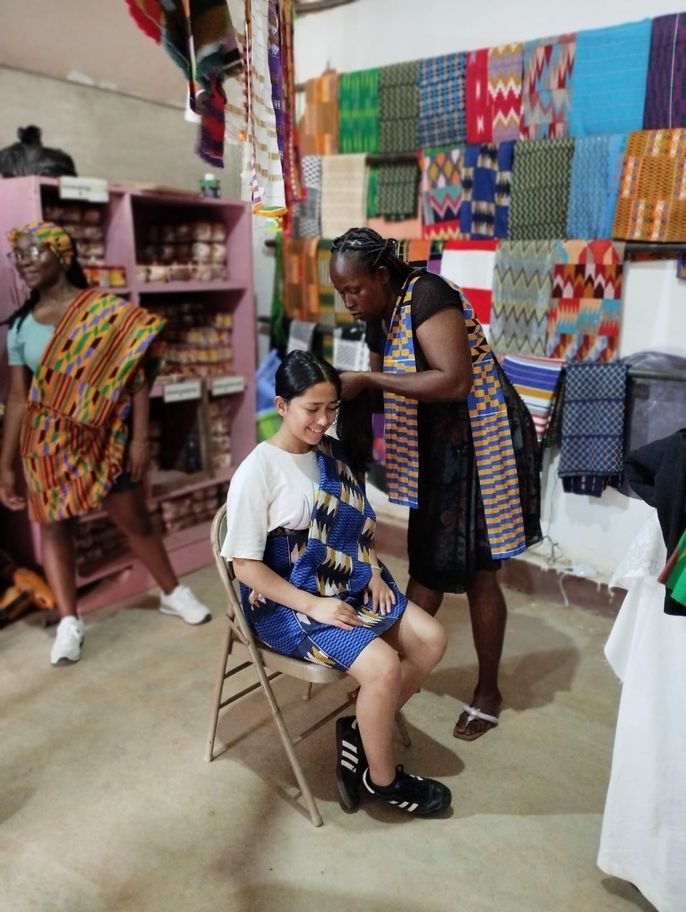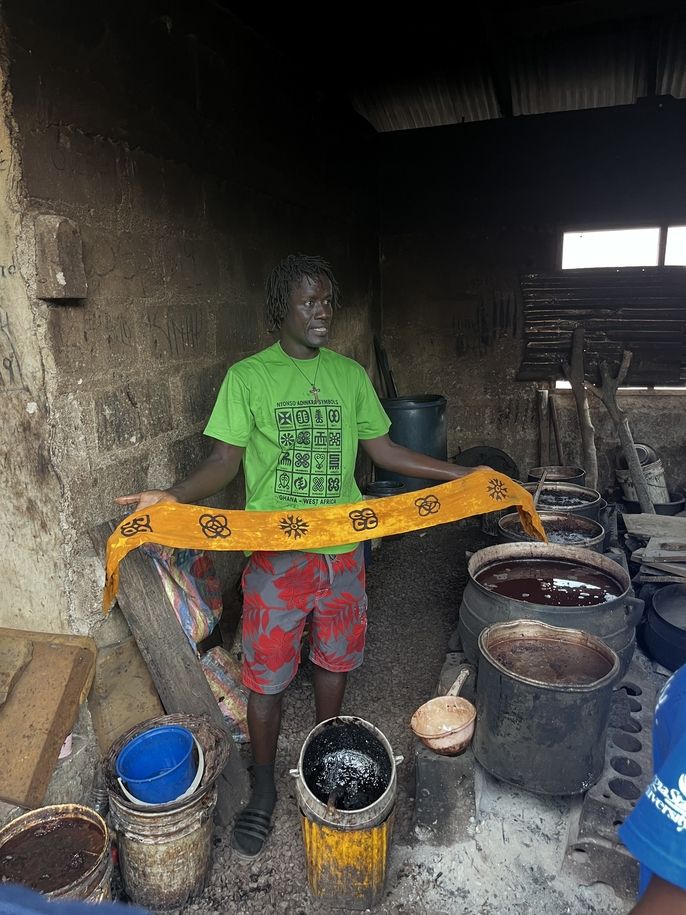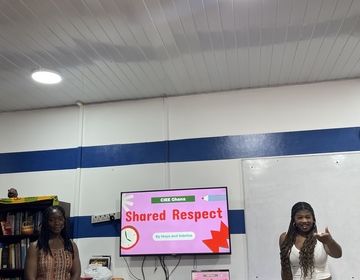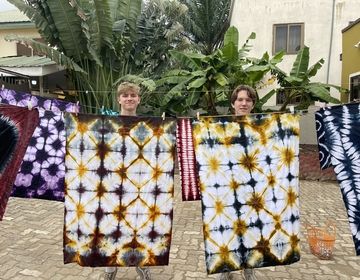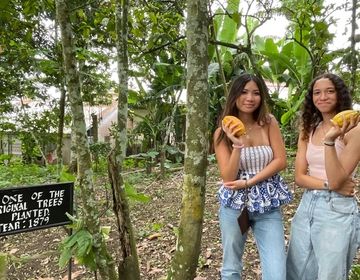Weaving Through History: A Weekend in Ghana’s Heartland
Last weekend we had the incredible opportunity to visit the Ashanti region of Ghana. Nestled in the heart of the country, this region is rich in history, culture, and tradition.
En route to Kumasi, we stopped in Adanwomase, a kente weaving village, where we witnessed the intricate process of creating kente cloth. Kente is a traditional Ghanaian textile known for its vibrant colors and geometric patterns. The artisans use techniques passed down through generations. We learned that kente is more than just a fabric; it is a symbol of cultural identity and pride, often worn during important ceremonies and celebrations.
Our journey continued to Ntonso Adinkra Village, where we discovered the art of printing adinkra cloth. Adinkra symbols, each of which has its own unique meaning, are stamped onto fabric using carved stamps. These symbols convey messages of wisdom, strength, and morality. For example, the “Eye Name” symbol, meaning “Except for God,” represents the omnipotence and immortality of God. The “Sankofa” symbol, depicting a bird with its head turned backwards, reminds us to learn from the past. Through this experience, we gained a deeper understanding of how symbols can communicate profound cultural values.
Another highlight of our weekend trip was our visit to the Manhyia Palace, the seat of the Asantehene, the king of the Ashanti people. The palace is not only a royal residence but also a museum that offers a rich narrative of Ashanti history and culture. Unfortunately, we did not meet the king, but we did meet one of his peacocks! The palace serves as a living testament to the Ashanti kingdom’s enduring legacy and its significance in Ghana’s cultural and political landscape. It was inspiring to learn about the role of the Asantehene in unifying the Ashanti people and preserving their heritage. The Manhyia Palace demonstrates the continuity of Ashanti leadership.
No visit to Kumasi would be complete without exploring the Kumasi Central Market, one of the largest open-air markets in West Africa. The market is a bustling hub of activity, with vendors selling everything from fresh produce and spices to textiles and handcrafted goods. We visited the market on a Sunday so the market was much less crowded than it would have been on other days. This allowed us to envision the crowded stalls of a regular day without being overwhelmed by crowds.
Throughout our excursion, we observed numerous examples of leadership and service. The artisans in the Adanwomase and Adinkra Village demonstrated dedication to their craft and a commitment to preserving cultural heritage. At the Manhyia Palace and the Armed Forces Museum, we learned about the significance of strong leadership and maintaining unity. As we continue our program, we will carry the wisdom and insights gained from this unforgettable journey into the heart of the Ashanti kingdom.
Related Posts
Student Project: Shared Respect
During this program, the participants worked in groups to create projects reflecting their experiential learning from the last three weeks. The following is a selection from Sabrina Addo and Maya... keep reading
Tying Up Loose Ends
With only a few days left in our program, we are embracing every opportunity to make lasting memories and reflect on our incredible journey. One of the highlights of this... keep reading
Visiting Ghana’s First Cocoa Farm
Student Blog Takeover: Milo and Anthea visit Ghana's first cocoa farm

